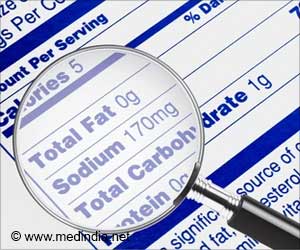Surplus use of decontaminants, sanitizers and other antimicrobial treatments in the manufacturing processes of food have found to create bacterial resistance.
Health authorities suggest that adding antibacterial products, disinfectants, and sanitizers to food benefits people more than the minimally processed foods and preservative-free foods.
According to the Institute of Food Technologists, surplus use of decontaminants, sanitizers and other antimicrobial treatments in the manufacturing processes of food have found to create bacterial resistance and nothing related to hinder health.In its report issued today, Antimicrobial Resistance: Implications for the Food System, IFT recommends that current antimicrobial treatments continue unabated to ensure food safety and public health.
‘The benefits of antimicrobial treatments are numerous,’ says Michael P. Doyle, Ph.D., IFT food safety expert, microbiologist and chair of the expert panel that wrote the report. ‘From healthy animals entering the food chain to good physical condition of crops to maintaining sanitation during processing,’ antimicrobial treatments are having their intended affect, he says.
Antimicrobials can come in the form of preservatives applied to keep food from deteriorating, or as fungicides applied to produce, or as sanitizers and disinfectants used on processing equipment. In the home, antimicrobials are commonly known as antibacterial products.
More than 700 soaps and other antimicrobial products are marketed commercially for the home, but use of these decontaminants does not impact bacterial resistance in the environment at the level that medicine and agriculture do, according to the report.
However, consumers’ increased preference for minimally processed foods may be affecting the survival of resistant bacteria.
Advertisement
This is the fourth Expert Report commissioned by IFT and funded by the nonprofit IFT Foundation, following the release of Functional Foods (2005), Emerging Microbiological Food Safety Issues (2002) and Biotechnology and Foods (2000). It was released at the IFT Annual Meeting + FOOD EXPO® in Orlando, the world’s single largest annual scientific meeting and technical exposition on food.
Founded in 1939, and with world headquarters in Chicago, Illinois, USA, the Institute of Food Technologists is a not-for-profit international scientific society with 22,000 members working in food science, technology and related professions in industry, academia and government. As the society for food science and technology, IFT brings sound science to the public discussion of food issues. For more on IFT, see http://www.ift.org.
The not-for-profit Institute of Food Technologists Foundation was established in 1985 to advance the quality of food science and technology worldwide by funding specific, important and innovative programs. IFT Foundation has disbursed $9 million to IFT programs. See http://www.ift.org/foundation.
ADDITIONAL DATA DRAWN FROM ANTIMICROBIAL RESISTANCE: IMPLICATIONS FOR THE FOOD SYSTEM
The following data appear within the latest Expert Report by the international nonprofit scientific society Institute of Food Technologists, Antimicrobial Resistance: Implications for the Food System, released here today at the IFT Annual Meeting + FOOD EXPO®, the world’s single largest annual scientific meeting and technical exposition on food. Refer to the report for attribution and references.
? Antibiotics have been used in food animals for more than 50 years to treat, prevent, or control infectious disease, or to improve efficiency of feed utilization and weight gain.
? Resistance among some foodborne bacterial pathogens has increased during the past 15-25 years.
? Estimates of the total amount of antibiotics produced annually during the 1970s-1990s range from 31 million to 50 million pounds. Estimates of the amount of antibiotics used in production agriculture range from 18.4 million to 30 million pounds.
? The quantity of human usage of antibiotics in the United States is unknown.
? It is difficult to estimate how antibiotic usage is distributed among human, veterinary, and plant applications, and difficult to estimate the exact amount of antibiotics introduced annually into the environment.
? More than 700 antibacterial-containing products are marketed for the home, but consumer use does not have an impact on antibiotic resistance at the level medicine and agriculture does.
? More than 8 billion chickens (broilers) and 264 million turkeys were produced in the United States in 2004.
? 103 million hogs were slaughtered for food use in 2004.
? More than 37 million head of cattle were slaughtered in the United States in 2004; there were 9.12 million cattle involved in dairy production in 2001.
? The 2005 inventory of U.S. sheep and lamb was 6.14 million head, 2.84 slaughtered for food use.
? U.S. food animal slaughter facilities apply sanitation or decontamination treatments immediately before or after hide removal, at the time of dressing (before carcass chilling) and potentially before chilling. European Union regulations do not allow use of chemical decontamination agents in such facilities.
? Antibiotics cannot be used in U.S. aquaculture for the purpose of growth promotion.
? The majority of fish pathogens do not infect humans because they are incapable of growing at human body temperature.
? Antibiotic use in aquaculture is at its lowest point since the early 1980s.
? Fruit trees account for the majority of antibiotic use on U.S. plants; application is generally to tree and blossoms, not fruit.
? Fungicides are used on fruits and vegetables more extensively than antibiotics, with about 26,000 tons used in the United States per year.
? Organic meat production may involve potentially higher safety risks due to prohibition of antimicrobial use; raising animals in an outdoor environment; longer growth periods; use of small slaughtering facilities.
? Bacteria in organic meat and poultry are likely more susceptible to antimicrobials because antimicrobials are prohibited in organic livestock production.
? The U.S. General Accounting Office has indicated that the elimination of antibiotics in pork production could increase costs to producers from $2.76 to $6.05 per animal, translating into increased consumer costs for pork from $180 million to over $700 million per year.
? A 10-year prospective analysis of a ban on feed additives for growth promotion for swine estimated that in the first year net profits would decrease $4.17 per head finished.
? A cattle study assumed that a ban of human-use antibiotics from use in animal growth promotion would result in a cost increase of 0.5% to 3.3% per pound of beef.
? It is estimated that 40,000 human illness-days per year are prevented by the continued use of an antibiotic to reduce bacterial illnesses within chicken flocks. For every day of human illness caused by antimicrobial use, an estimated 4,000 illness-days are prevented.
? The number of patients seen per hour by physicians is increasing due to increasing administrative demands; writing a prescription can serve as a termination strategy for an office visit.
Antimicrobial – Any compound, including antibiotics, food antimicrobial agents, sanitizers, disinfectants, and other substances, that acts against microorganisms.
Antibiotics – Drugs used to treat infectious disease in humans, animals, or plants by inhibiting the growth of or destroying microorganisms; such substances may be naturally-occurring, semi-synthetic, or synergistic.
Resistance – Can result from mutations or from the acquisition of foreign genetic information; may manifest though multiple mechanisms; may take the form of temporary adaptation and not true genetic mutation.
Withdrawal time – The FDA regulates the period of time in which an antibiotic cannot be administered to animals prior to milk or egg collection or slaughter of the animal for human consumption. Withdrawal times are designed to ensure that no unsafe concentration of drug residue is present in the food animals at the time of slaughter.
Source: Newswise











